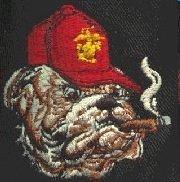(Excerpt only ~ Continued @ link...)
By 1791, Hamilton had created a vast Federal debt and the nation's first central bank, owned privately.
He had planned it from the beginning. That was why he promoted the Constitution. This was why he wrote most of The Federalist Papers.
The anti-Federalists predicted accurately what was coming in 1787. It came.
There was a conspiracy in Philadelphia in 1787. It was successful. I have written a book on this: Conspiracy in Philadelphia. You can download it for free here.
To understand the expansion of Federal power in 1788, consider this. In 1786, the Federal government's total army was 1,200 men. It was too small come to the rescue of the state of Massachusetts in putting down Shay's rebellion. This was a rebellion by rural counties against the state government's decision in 1786 to pay off state debts in silver, collected from the counties. The governor and most of the members of the legislature had bought these debts for pennies in fiat currency. Now they were about to get very rich at the expense of rural taxpayers, who had little silver. A lot of counties revolted.
That was the trigger that got George Washington to attend the Convention, which he had previously refused to agree to attend. He had been completely misinformed about the motives of the protest. A former general of his sent him letters that concealed the politics of the revolt. Read my article on this revolt: "John Hancock's Big Toe."
In 1794, Washington personally led an army of 13,000 to crush a tax revolt in Western Pennsylvania. This was the first and last time a President ever led troops into action. Because so few men volunteered, the Federal government imposed a draft. This was the whiskey rebellion.
The revolt was against Hamilton's 1791 tax on whiskey -- a tax used to raise revenues to pay off Federal debts at face value -- debts that the holders had purchased for pennies. If this sounds like a replay of Shays' rebellion and its outcome, that's because it was, but on a far larger scale.
Centralized power? I guess so.
What Hamilton didn't do, Federalist Party Supreme Court Chief Justice John Marshal did do, 1801-1836. Among other things, he wrote the opinion for McCulloch v. Maryland (1819), which authorized the privately owned Second Bank of the United States to exercise a government-granted monopoly over the monetary system.
In only one fiscal year, 1836, has the U.S. government ever been debt-free.
The Constitution was from day one an instrument to consolidate Federal power and expand it. The Constitution has proven to be a weak reed in every attempt to slow down the expansion of Federal power. It has proven utterly impotent to roll Federal power back as little as a decade, ever.
(Excerpt only ~ Continued @ link...)http://www.garynorth.com/public/7833.cfm
--
**********
Hey, Check out the Reader Responses
at the source article--they are gems in themselves!
**********

**********

Gunny G: BLOGGER 1984+ @Blogspot.com
http://gunnyg.blogspot.com/
**********
Gunny G Blog @ WP
http://www.GunnyG.WorPress.com/
***********




Gary North archives @ LewRockwell.com
ReplyDeletehttp://www.lewrockwell.com/north/north-arch.html